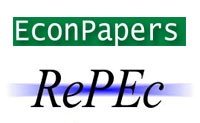Çevresel İnovasyon türlerinin etkileşimi
DOI:
https://doi.org/10.55094/hoec.1.2.02Anahtar Kelimeler:
çevresel yönetim inovasyonu- çevresel süreç inovasyonu- çevresel ürün inovasyonuÖzet
Çevresel inovasyonlar, sürdürülebilirlik ve doğal çevrenin korunmasına katkı sunan yeni süreçler, yönetim yaklaşımları ya da ürünler olarak ifade edilmektedir. Çalışmanın amacı, üç tür çevresel yenilik (yönetim, süreç ve ürün) arasındaki karşılıklı ilişkileri incelemek ve Türk firmaları için çevresel yeniliklerin ana belirleyicilerini göstermektir. Verilerin toplama CATI yöntemi (bilgisayar destekli telefon görüşmesi) ile alanında uzman bir ekip yardımıyla toplanmıştır. Marmara bölgesinde farklı endüstrilerde faaliyet gösteren 41 şirketin katılımıyla çalışma yapılmıştır. Araştırma sorularını araştırmak için tanımlayıcı istatistikler ve regresyon analizi kullanılmıştır. Sonuçlar, çevresel yönetim yeniliklerinin çevresel süreç ve çevresel ürün yenilikleri üzerinde olumlu bir etkiye sahip olduğunu, çevresel süreç yeniliklerinin de çevresel ürün yenilikleri üzerinde güçlü bir etkiye sahip olduğunu desteklemektedir. Ek olarak, çevresel uygulamalar için ana belirleyiciler mevcut düzenlemelere yanıt olarak görünmektedir ve küresel ısınma da kurumsal düzeyde önemli bir endişe kaynağıdır. Bulgular, farklı çevresel inovasyon türleri arasındaki etkileşimin birbirini güçlendirdiği için çevresel inovasyon uygulamalarının tüm organizasyon içinde benimsenmesi gerektiğini göstermektedir.
İndirmeler
Referanslar
Bartlett, D., & Trifilova, A. (2010). Green technology and eco-innovation: Seven case-studies from a Russian manufacturing context. Journal of Manufacturing Technology Management, 21(8), 910-929.
Bossle, M. B., de Barcellos, M. D., Vieira, L. M., & Sauvée, L. (2016). The drivers for adoption of ecoinnovation. Journal of Cleaner production, 113, 861-872.
Carrillo-Hermosilla, J., González, P. R. D., & Könnölä, T. (2009). What is eco-innovation?. In Eco-innovation (pp. 6-27). Palgrave Macmillan, London.
Chen, Y. S., Lai, S. B., & Wen, C. T. (2006). The influence of green innovation performance on corporate advantage in Taiwan. Journal of business ethics, 67(4), 331-339.
Cheng, C. C., & Shiu, E. C. (2012). Validation of aproposed instrument for measuring eco-innovation: An implementation perspective. Technovation, 32(6), 329-344.
Dangelico, R. M., & Pujari, D. (2010). Mainstreaming green product innovation: Why and how companies integrate environmental sustainability. Journal of business ethics, 95(3), 471-486.
Dangelico, R. M. (2016). Green product innovation: Where we are and where we are going. Business Strategy and the Environment, 25(8), 560-576.
Demirel, P., & Kesidou, E. (2011). Stimulating different types of eco-innovation in the UK: Government policies and firm motivations. Ecological Economics, 70(8), 1546-1557.
Gunday, G., Ulusoy, G., Kilic, K., & Alpkan, L. (2011). Effects of innovation types on firm performance. International Journal of production economics, 133(2), 662-676.
Hair, J. F., Black, W. C., Babin, B. J., & Anderson, R. E. (2013). Multivariate data analysis: Pearson new international edition. Pearson Higher Ed.
Hart, S. L., & Dowell, G. (2011). Invited editorial: A natural-resource-based view of the firm: Fifteen years after. Journal of management, 37(5), 1464-1479.
Hellström, T. (2007). Dimensions of environmentally sustainable innovation: the structure of eco‐innovation concepts. Sustainable development, 15(3), 148-159.
Hemmelskamp, J. (1997). Environmental policy instruments and their effects on innovation. European Planning Studies, 5(2), 177-194.
Hojnik, J., & Ruzzier, M. (2016). What drives ecoinnovation? A review of an emerging literature. Environmental Innovation and Societal Transitions, 19, 31-41.
Horbach, J. (2008). Determinants of environmental innovation—New evidence from German panel data sources. Research policy, 37(1), 163-173.
Kammerer, D. (2009). The effects of customer benefit and regulation on environmental product innovation.: Empirical evidence from appliance manufacturers in Germany. Ecological Economics, 68(8-9), 2285-2295.
Khanna, M., & Anton, W. R. Q. (2002). Corporate environmental management: regulatory and marketbased incentives. Land economics, 78(4), 539-558.
Kemp, R., & Pearson, P. (2007). Final report MEI project about measuring eco-innovation. UM Merit, Maastricht, 10(2), 1-120.
Panapanaan, V., Uotila, T., & Jalkala, A. (2014). Creation and alignment of the eco-innovation strategy model to regional innovation strategy: A case from Lahti (Päijät-Häme Region), Finland. European Planning Studies, 22(6), 1212-1234.
Oke, A. (2007). Innovation types and innovation management practices in service companies. International Journal of Operations & Production Management, 27(6), 564-587.
Rehfeld, K. M., Rennings, K., & Ziegler, A. (2007). Integrated product policy and environmental product innovations: An empirical analysis. Ecological economics, 61(1), 91-100.
Rennings, K., Ziegler, A., Ankele, K., & Hoffmann, E. (2006). The influence of different characteristics of the EU environmental management and auditing scheme on technical environmental innovations and economic performance. Ecological Economics, 57(1), 45-59.
Schiederig, T., Tietze, F., & Herstatt, C. (2012). Green innovation in technology and innovation management–an exploratory literature review. R&d Management, 42(2), 180-192.
Triguero, A., Moreno-Mondéjar, L., & Davia, M. A. (2013). Drivers of different types of eco-innovation in European SMEs. Ecological economics, 92, 25-33.
Xie, X., Huo, J., & Zou, H. (2019). Green process innovation, green product innovation, and corporate inancial performance: A content analysis method. Journal of Business Research, 101, 697-706.
Ziegler, A., & Nogareda, J. S. (2009). Environmental management systems and technological environmental innovations: Exploring the causal relationship. Research Policy, 38(5), 885-893.
İndir
Yayınlanmış
Nasıl Atıf Yapılır
Sayı
Bölüm
Lisans
Telif Hakkı (c) 2023 Holistence Publications

Bu çalışma Creative Commons Attribution 4.0 International License ile lisanslanmıştır.
Yazarlar, makale Journal of Economics'te yayınlanmak üzere kabul edildiğinde .makalenin içeriğindeki tüm telif haklarını, Holistence Publications'a devrederler. Yazarlar, patent hakları gibi telif hakkı dışındaki tüm mülkiyet haklarını saklı tutar.
Bu makalede yazar olarak listelenen herkes çalışmaya önemli, doğrudan, entelektüel katkılar yapmış olmalı ve bunun için kamu sorumluluğu almalıdır.
Bu makale daha once yayınlanmamış ve başka dergilerde yayınlanmak üzere gönderilmemiştir.
















